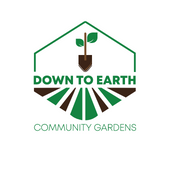Photography by Justine Hand for Gardenista.

Now that Easter is over we are inundated with Easter Egg Shells! This is an exciting time for the garden when we have additional resources for growing happy edibles in the Living Lab. At the end of every week when my containers are full, I set to pulverizing them into little bits with wooden spoons, thus compacting the shells so that I can collect more. If you prefer to use a food processor to grind up your egg shells, reduce to a fine powder and store in a mason jar. The finer the particles the easier for your plants to absorb the calcium. Keep adding shells to store throughout the year to use in the spring.
Fertilizer

Though nitrogen, phosphorus, and potassium are most vital for healthy growth, calcium is also essential for building healthy “bones”—the cell walls of a plant. Composed of calcium carbonate, eggshells are an excellent way to introduce this mineral into the soil. To prep the eggshells, grind with a mixer, grinder, or mortar and pestle and till them into the soil. Because it takes several months for eggshells to break down and be absorbed by a plant’s roots, it is recommended that they be tilled into the soil in fall. More shells can be mixed into your soil in the spring.
By the same token, finely crushed shells mixed with other organic matter at the bottom of a hole will help newly planted plants thrive. (Tomatoes especially love calcium.) For an exciting recycled garden cocktail, try mixing your eggshells with coffee grounds, which are rich in nitrogen.
Finally, eggshells will reduce the acidity of your soil and help to aerate it.
